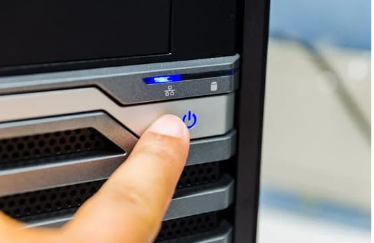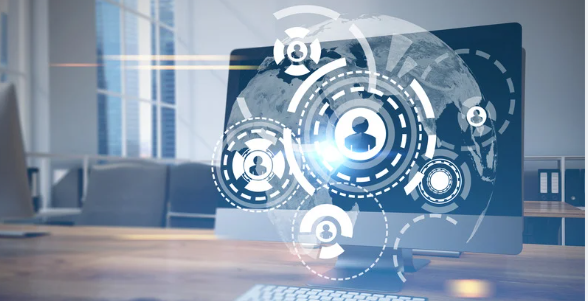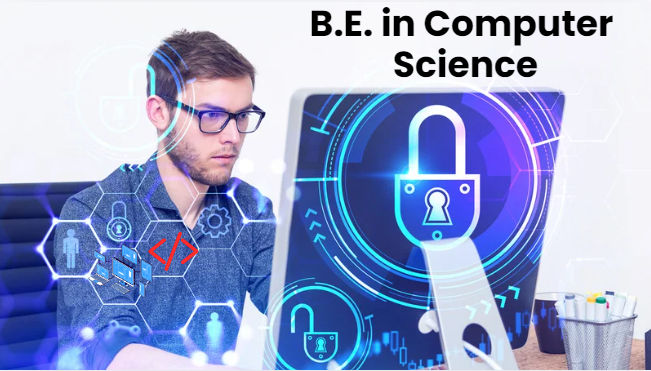When you press the power button on your computer, a series of steps take place to prepare the computer for use. This entire sequence is known as the “booting process.” In simple terms, booting is the process of starting up a computer and loading the operating system, like Windows, macOS, or Linux, so you can use it. Let’s go through each step of the booting process in detail to understand what happens when a computer starts up.
Steps of the Booting Process
The booting process involves several steps that work together to ensure your computer is ready for use. Here’s a step-by-step breakdown of what happens during the booting process.

Step 1: Powering On the Computer
When you press Computer power button sends a signal to the power supply unit (PSU) inside the computer. The PSU converts the AC (alternating current) from the wall outlet into DC (direct current), which is the type of electricity the computer components need to function. and PSU distributes power to all the components in the computer, such as the motherboard, CPU (central processing unit), RAM (random access memory), hard drive or SSD (solid-state drive), and other peripheral devices.

Step 2: BIOS/UEFI Initialization
Once the computer receives power, it first activates a small program stored on a chip on the motherboard called the BIOS (Basic Input/Output System) or UEFI (Unified Extensible Firmware Interface). BIOS and UEFI serve the same purpose, but UEFI is more modern and has more features than the traditional BIOS.

The primary job of the BIOS/UEFI is to initialize and test the computer’s hardware components, such as the keyboard, mouse, and storage devices, to make sure they are working correctly. The BIOS/UEFI performs a series of checks called the POST. This test checks that the hardware components are functioning correctly. If there is a problem, such as missing RAM or a malfunctioning keyboard, the computer will emit a series of beeps (known as beep codes) or display an error message on the screen.
| What Is A Computer BIOS? | Details Informations About UEFI |
| Types Of Computer Virus | Hardware Components |
| What Is Post In Computer | Types Of Computer Cables |
Step 3: Locating the Boot Loader
Once the POST is complete and all hardware is verified to be working properly, the BIOS/UEFI looks for a special program called the boot loader. The boot loader is a small program stored on the computer’s storage device, usually on the hard drive or SSD. Its job is to find and load the operating system (OS) into the computer’s memory (RAM).
The BIOS/UEFI uses a list of devices in a specific order, called the boot order or boot priority. This list tells the BIOS/UEFI where to look first for the boot loader. Common boot devices include the hard drive, SSD, USB drive, or CD/DVD drive
| Computer Storage Device? | What Is Solid State Drive (SSD) |
| Digital Versatile Disc | Compact Disc |
| What Is USB ? | Functions Of Operating System |
Step 4: Loading the Operating System
Once the BIOS/UEFI locates the boot loader, the boot loader takes over and begins loading the operating system. The boot loader loads the OS kernel into the computer’s RAM. The kernel is the core part of the operating system that manages the computer’s resources and allows the software to communicate with the hardware. After Load the OS in to RAM operating system starts loading system services, which are background programs needed for the OS to function properly. These services might include network management, file system management, and other essential tasks.

Step 5: Configuring System Settings
After the operating system is loaded, the computer begins to configure system settings to ensure everything works correctly. The OS reads configuration files to apply system settings, such as display resolution, time and date, and user preferences.
The OS loads device drivers, which are special programs that allow the operating system to communicate with hardware devices like printers, graphics cards, and sound cards. Each device connected to the computer needs a driver to work properly. Without drivers, the OS wouldn’t know how to interact with the hardware.
Step 6: User Authentication
Once the operating system has finished loading, the computer presents a login screen where the user must enter their credentials to access the system. If multiple user accounts are set up on the computer, you must select the correct account and enter the associated password or use another authentication method (like a fingerprint or face recognition).
The OS checks the entered credentials against its database to verify the user. If the credentials are correct, the user gains access to their personalized environment. If not, the system will request the correct information again.
Step 7: Loading User Environment
After the user successfully logs in, the operating system begins to load the user’s personal environment.The OS loads the user profile, which contains personalized settings like desktop background, screen resolution, and antivirus software or cloud storage services.

Step 8: System is Ready for Use
At this point, the computer has completed the booting process and is ready for use. The user can now open applications, browse the internet, create documents, and perform any other tasks they need to.
Components Use in Booting Process
The booting process of a computer involves several key components working together to initiate and prepare the system for use. Below is a breakdown of the primary components involved in the computer booting process:
- Power Supply Unit (PSU): The PSU is responsible for converting electrical power from an external source (such as an outlet) into the type of power needed by the computer. It supplies power to all components, including the motherboard, CPU, and storage devices.
- Motherboard: The motherboard is the main circuit board that houses the CPU, RAM, and other critical components. It also contains connectors for peripherals.
- BIOS/UEFI: BIOS/UEFI is firmware embedded in the motherboard that initializes the hardware components and loads the operating system
- CPU: Executes instructions and performs calculations. It is essential for running all software, including the operating system.
- RAM: Temporarily stores data that the CPU needs to access quickly. During booting, the operating system kernel and other essential programs are loaded into RAM.
- Storage Devices (HDD/SSD): Stores the operating system, applications, and data. The bootstrap loader located here initiates the loading of the OS.
Common Booting Problems
While the booting process usually goes smoothly, sometimes issues can occur. Here are some common problems and their possible solutions.
- No Power or No Response: If the computer doesn’t power on or shows no signs of life, check the power cable, power supply, and battery (if using a laptop). Ensure the power outlet works correctly.
- Beep Codes: If you hear a series of beeps when turning on your computer, the BIOS/UEFI is indicating a hardware problem. Refer to the computer’s manual or manufacturer’s website to understand the beep codes and identify the faulty component.
- Stuck on BIOS/UEFI Screen: If the computer is stuck on the BIOS/UEFI screen, there might be an issue with the boot order settings or a hardware problem. Check the boot order in the BIOS/UEFI settings and ensure the primary boot device (like the hard drive or SSD) is correctly set.
- Operating System Not Found: If you see a message stating “Operating System Not Found,” the BIOS/UEFI cannot find an OS to load. This could be due to a disconnected or failed storage device or an incorrect boot order. Check the storage device connections and boot order settings.
- Blue Screen of Death (BSOD) or Kernel Panic: If the computer displays a blue screen or a kernel panic, the operating system has encountered a critical error. This could be caused by faulty hardware, corrupted system files, or incompatible drivers. Restart the computer and try booting into Safe Mode to diagnose the issue.
Tips for Smooth Booting Process
- Keep Your BIOS/UEFI Updated: Manufacturers release updates to fix bugs and improve compatibility with new hardware. Keep your BIOS/UEFI firmware up to date.
- Check Hardware Connections Regularly: Ensure all internal components, such as RAM, storage devices, and peripheral connections, are secure and properly seated.
- Use Reliable Power Sources: Ensure your computer is connected to a stable power source. Power surges or fluctuations can cause damage and lead to booting problems.
- Update Your Operating System Regularly: Keeping your OS updated ensures you have the latest security patches and system improvements, which can prevent many boot-related issues.
- Backup Important Data Regularly: Regularly back up your data to avoid loss in case of booting issues or hardware failure.
Conclusion
Understanding the step-by-step process of booting a computer helps you appreciate what goes on behind the scenes when you start your computer. From powering on and initializing hardware to loading the operating system and setting up the user environment, each step is crucial to ensuring your computer is ready for use. By knowing these steps and being aware of common issues and their solutions, you can better maintain your computer and troubleshoot problems when they arise.
Recommended Article
- Types of Operating System (OS): Features,Types And Uses
- 15 Features of Operating System You Should Know
- What is a Chromebook? Features, Uses, and Benefits
- Difference Between Linux and Unix : Major Differences
- Difference Between Linux and Windows
- Top 10 Best Linux OS For Hacking And Penetration Testing
- What is CentOS Linux? Everything You Need to Know
- What Is A Username? Definition, Types, Formats, And Examples
- What Is A Bootloader? How Bootloaders Start Your Computer
- Top 20 Highest Salary Jobs : Lucrative Careers with Best Salaries - 5 April 2025
- Types of Operating System (OS): Features,Types And Uses - 5 April 2025
- 15 Features of Operating System You Should Know - 4 April 2025












